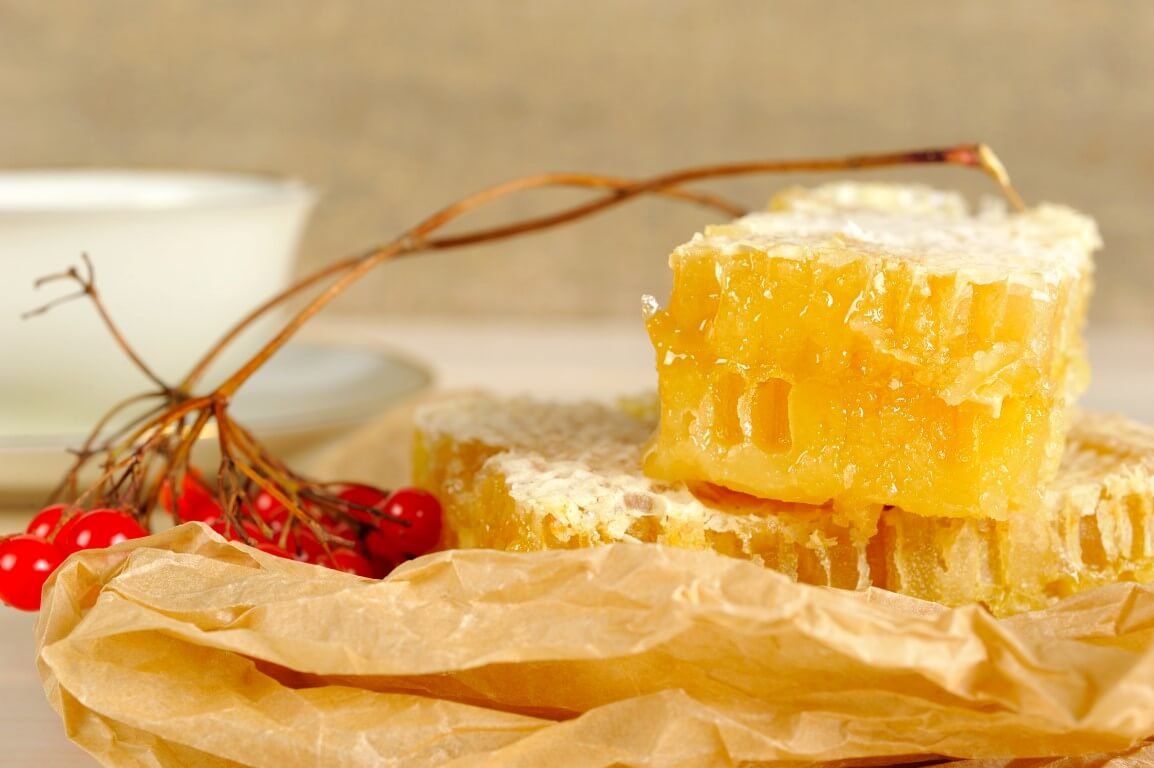Blog’as
The shelf life of honey

According to the law, all food products must indicate their shelf life on their label. Honey products is no exception. However, a jar of honey that has been opened can stand there for months on end as we gradually get to the bottom of it. The shelf life of honey depends on several main criteria: the maturity of the honey, its composition and quality. So, how long can honey really last?
Maturity
Even though carbohydrates make up the bulk of honey, its protein content and other components can start to spoil. The fastest to spoil is fresh honey. Fresh honey can easily be identified by the beekeeper from the honeycomb: if the cells aren’t sealed, or only a few of them are sealed, the honey inside them is considered fresh. This honey is very much like a sugar syrup: it is liquid, contains lots of water and isn’t inclined to crystallize in the long run. Only matured honey from sealed honeycomb cells can have a long shelf-life. Much like dried or fermented goods, this kind of honey can last a long time. In their literature, the ancient Greeks described honey as an eternally fresh food stuff. Great proof of the unlimited shelf life of honey is the fact that baskets of honey were once found in the Egyptian pyramids, and the honey had still not spoiled and was still in edible condition.
Composition and quality
The longevity of honey also depends on its composition. The most powerful preservatives in honey are hydrogen peroxide, acidity and a low water content. Water is said to be the source of life. So when there is hardly any at all, any microorganism that decides to set up simply dies. The lower the water content of a product, the longer its shelf-life (this is why products are often dried). So, if you want your honey to last, it has be prepared by the bees to completion: they must evaporate its moisture content by beating their wings and seal the cells shut.
The hydrogen peroxide in honey also contributes to the death of any microorganisms rearing their heads. When bees gather their nectar and return to the hive, they pour it from proboscis to proboscis until it reaches its designated honeycomb cell. Bee glands secrete enzymes that help digest honey. It is when these enzymes break down the nectar that hydrogen peroxide, a highly disinfecting and acidic compound, is formed. However strange it may sound, honey is an especially acidic product (with a pH of ~3–4.5). Such an acidic environment is no place to live for bacteria and other microorganisms because they cannot reproduce and eventually they die. Because it is various microorganisms that are to blame for products spoiling, this makes the shelf life of honey almost limitless.
So, if we believe in the authenticity of that Egyptian honey, the longest honey has gone without spoiling is for over 3,000 years. However, if you wish to preserve the best properties of honey, it is best kept in a dark and cool place.




